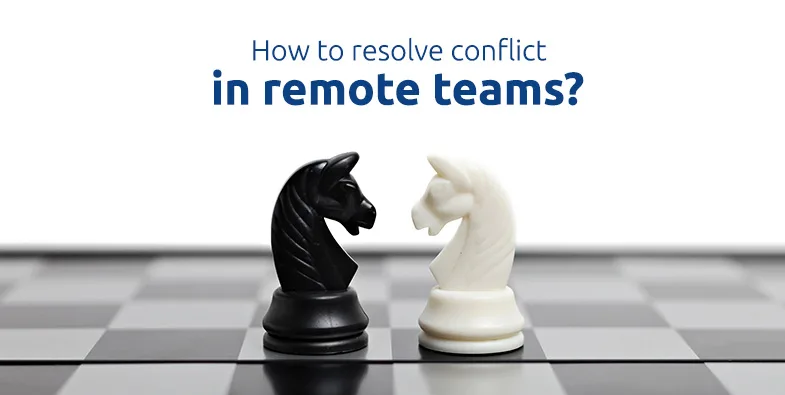Remote work brings flexibility and efficiency, but it also changes how people communicate and collaborate. Without those day-to-day hallway conversations or quick clarifications after a meeting, small issues can grow bigger than they should. For leaders, being able to handle conflict in this new environment is essential.
If this is an area you want to strengthen, consider managing remote teams training. It equips leaders with practical tools to address conflict early and keep teams moving in the same direction.
Why Conflict Feels Different in Remote Teams
Conflict at the office often gets resolved on the spot. Two people disagree, they talk it out in person, and move forward. Remote teams don’t always have that luxury. Challenges tend to look different:
• No body language to rely on. A short email can be taken the wrong way.
• Time zones stretch things out. What could have been a five-minute chat can drag on for days.
• Digital platforms feel transactional. Even video calls don’t always replace the warmth of face-to-face conversations.
Research from the Society for Human Resource Management (SHRM) shows that communication breakdowns are the most common trigger of workplace conflict, which remote teams are particularly exposed to.
Practical Approaches to Resolving Conflict Remotely
1. Set Clear Communication Rules
Confusion often happens when expectations aren’t spelled out. Remote teams should agree on basics like: when to email, when to call, and how quickly people should respond. It may feel obvious, but it saves a lot of frustration later.
2. Step In Early
Leaders sometimes wait, hoping tension will fade on its own. In remote setups, silence usually makes things worse. A short call to clear the air can keep a small issue from turning into a bigger problem.
3. Separate Facts from Feelings
It’s easy for remote conflicts to feel personal. Leaders need to guide people back to what actually happened. A simple process works well: define the issue, let each person share their perspective, and agree on the way forward. Leaders who have gone through conflict management training for leaders are better prepared to keep this kind of conversation constructive.
4. Act as a Facilitator, Not a Judge
When people disagree, your role is to guide the conversation, not declare a winner. Ask open questions, summarize what you’re hearing, and point both sides back toward the bigger team goals.
5. Put the Agreement in Writing
In a remote environment, verbal agreements get lost. A quick written recap of what was decided helps prevent the same argument from popping up again.
Practical Examples Leaders Can Relate To
Marketing and Client Relations
At a global marketing agency, two account managers disagreed on client communication. One wanted all updates filtered through the lead, the other preferred sending them directly. The tension spilled into team meetings.
The leader eventually pulled them into a video call, reframed the issue around their shared goal of building client trust, and helped them design a process. Routine updates could go direct, but major decisions would go through the lead. The disagreement ended up improving client clarity. This is the type of solution practiced in communication training for leaders.
Healthcare Administration
In one hospital’s remote admin team, nurses and operations staff kept clashing over shift schedules. Operations staff felt ignored, while nurses felt micromanaged.
The leader created space for both sides to explain their needs. Together they built a shared scheduling protocol. Not only did it ease tension, but scheduling errors dropped significantly.
Supply Chain in Manufacturing
A manufacturing company’s remote supply chain managers argued about reporting. Some preferred spreadsheets, others software dashboards. The inconsistency was slowing everyone down.
The leader hosted a working session where people compared approaches and agreed on one template. The conflict turned into an opportunity to streamline processes.
Creating a Team Culture That Handles Conflict Well
The best leaders don’t just manage conflict when it happens. Rather, they create a culture where it is safe to disagree and where problems get addressed openly. That means:
• Building regular check-ins that look at team health, not just tasks.
• Setting the tone that respect and accountability are non-negotiable.
• Showing calm, fair conflict resolution themselves.
These habits shift a team from avoiding problems to tackling them head-on. They are also a focus in our leadership development training program.
How Conflict Resolution Connects to Bigger Leadership Skills
Conflict management doesn’t stand alone. It links directly to influence, decision-making, and cross-cultural awareness. Leaders who build these skills are better equipped to handle the complexities of remote work.
That is why our Leadership Courses cover these areas together. For a deeper dive into managing distributed teams, take a look at our Leading Remote Team course.
Strengthening Trust Through Conflict Resolution
Remote conflict isn’t going away. What matters is how leaders respond. Those who step in early, listen well, and guide conversations toward shared outcomes can turn disputes into growth moments. In the long run, it isn’t the absence of conflict that builds strong teams, it’s the way conflict is resolved that creates lasting trust.
Frequently Asked Questions
1. What is the best way to resolve conflict in a remote team?
Address issues quickly and talk live whenever possible. Video or phone calls give more context than email and reduce misinterpretation.
2. How do time zones complicate conflict resolution?
Time zone gaps can make small conflicts drag on. Leaders should set expectations for response times and use shared tools to document decisions.
3. Why is communication training important here?
Because most remote conflicts come from misunderstanding. Programs like communication training for leaders give leaders the tools to prevent and defuse these situations.
4. Can conflict ever be good for a remote team?
Yes. When handled well, conflict surfaces new ideas and improves processes. The key is creating a safe space where different perspectives are heard.


